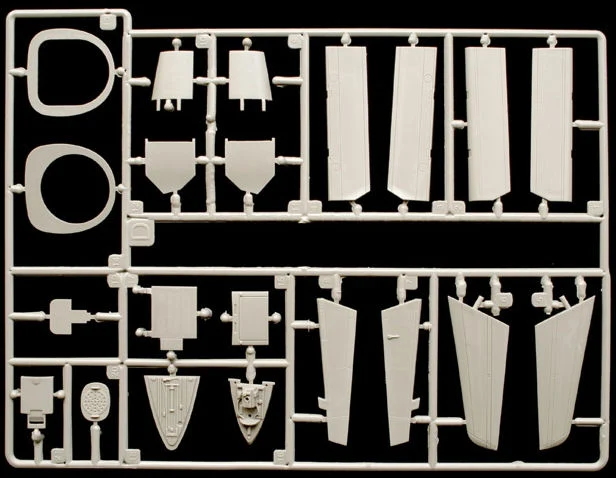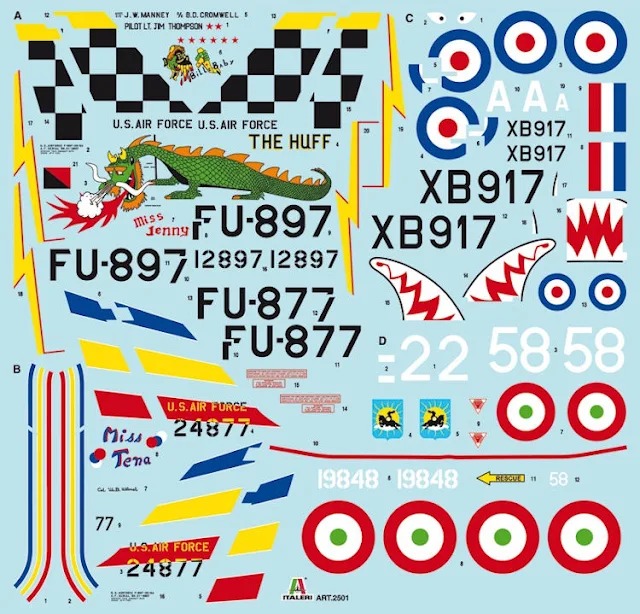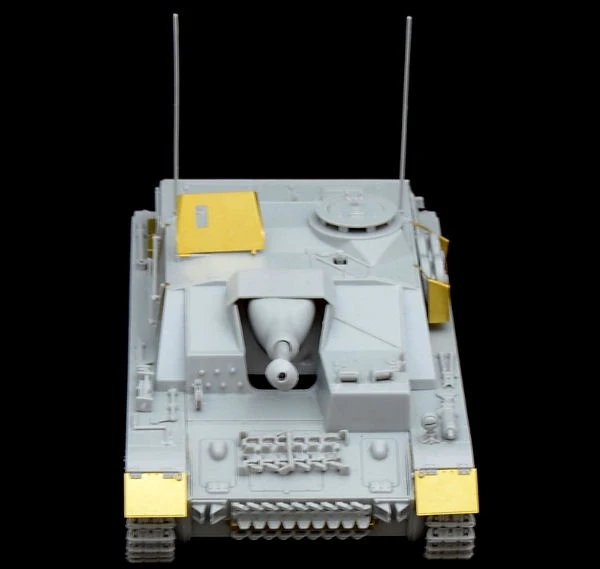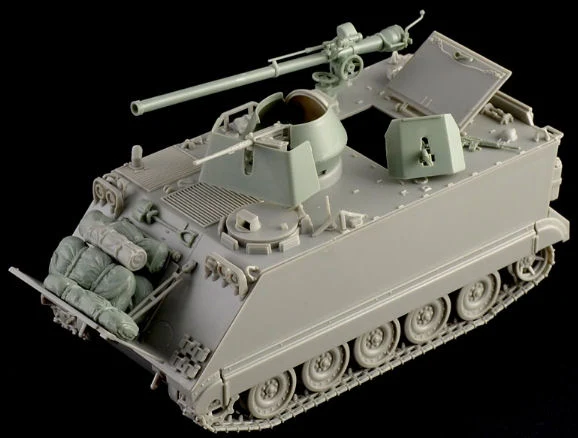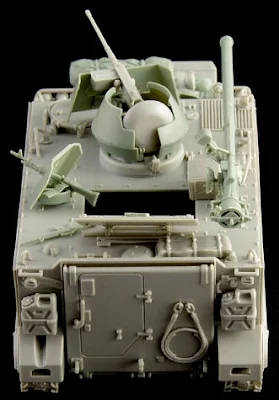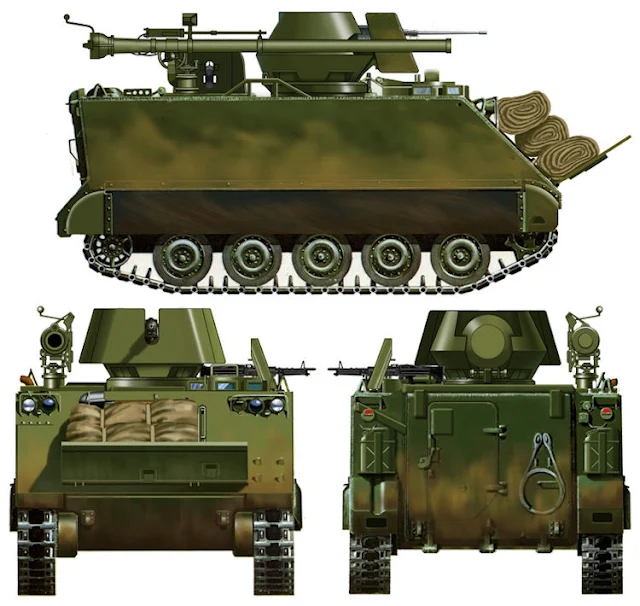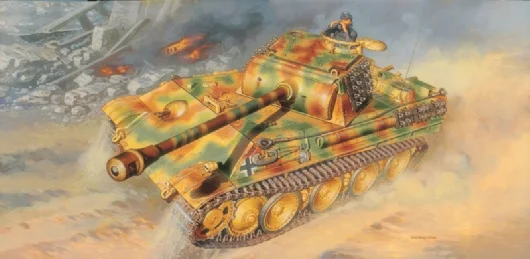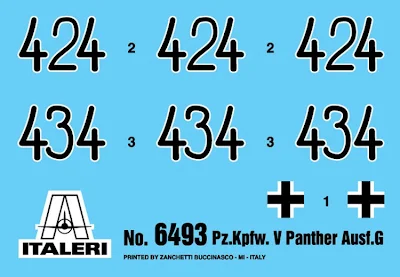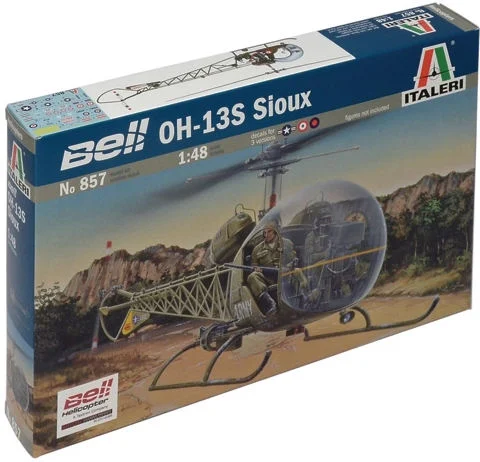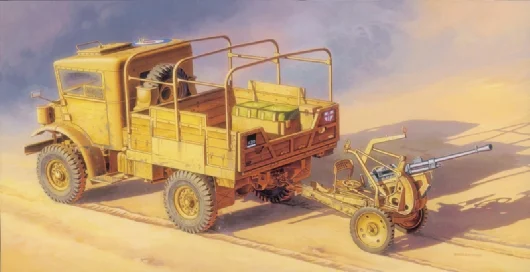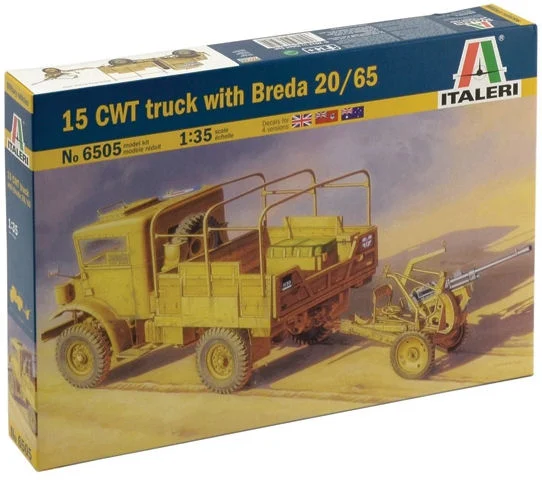This month Italeri restores some faith with some better
pictures of their new Starfighter – it may still be all we hoped! Along with a
re-issued Dodge that modellers will snap up, a tiny helicopter in small scale
and THE most gaudy F-16 you will ever see ( still cool tho)
.jpg)
.jpg)

Italeri’s New Kits for December 2013

100% new moulds - Finely
engraved recessed panel lines and rivets
- fully detailed engine , cockpit , and avionics bay - gun bay with
fully detailed m61 gun - open or closed air brakes - photoetched fret - 316
parts - 2 huge decals sheets for 10 versions -
.jpg)
.jpg)
.jpg)
.jpg)
.jpg)
.jpg)
.jpg)
The supersonic interceptor aircraft F-104 Starfighter was,
without doubts, one of the most famous, and long-serving, aircraft in History.
The F-104 entered in service in the late ‘50s and served with USAF for a long
time. Later on, it has formed the fighter squadrons of several NATO air forces
for more than 40 years. The “Starfighter” was based and developed on an
original and unique concept for its time: innovative shape of the plane
extremely thin, small, straight mid-mounted, trapezoidal wings, the stabilizer mounted atop the fin, a powerful and reliable General Electric J-79 turbojet
engine able to guarantee outstanding supersonic performances.
instuctions sheet with color profiles (10x4 plates) - (prm) photografic reference manual
.jpg)
.jpg)
.jpg)
.jpg)
The F-104G, manufactured under license in several NATO
countries, has been built in a huge number of units and used, thanks to its increased flight
range and load capacity, as multi-role fighter-bomber. The F-104S, upgraded in
technological features and weapons system, has equipped the Italian Air Force
fighter squadrons until the mid-2000s, replaced with the Eurofighter Typhoon,
showing an impressive operational life.
.jpg)
.jpg)
.jpg)
.jpg)
.jpg)
.jpg)
Decals for 10 versions – Belgian, Canadian, German, Greek, Italian and Dutch
Starfighters…
.jpg)
.jpg)
.jpg)
This small and easy-to-handle helicopter, developed in the sixties, proved
to be a big technical and commercial success. Its reliability and performance
make it a valuable aircraft for civilian and military operators of at least
fifty different nations. This particular version derives from the model 530
Defender and is in service with the U.S. Army Special Forces which use it for
reconnaissance and night surveillance thanks to an infra-red night vision
system, which together with the helicopter’s low noise level make it a perfect
and silent “Night Fox”.
.jpg)
.jpg)
.jpg)
Decals for 3 versions
in Japanese, US and Israeli service
.jpg)
.jpg)
Dodge 3/4 ton trucks are still used by many armies today. They were first
delivered to all Allied Forces including the Soviet Union in 1941 and most of
them served for higher staff officers. It’s rugged construction made this dodge
very valuable in every situation, but eventually most command cars were used
for parade and other representation duties.
.jpg)
.jpg)
.jpg)
.jpg)
.jpg)
Decals for 3 versions
in US Army Service
.jpg)
.jpg)
.jpg)
In 1986, the USAF
established the ADF (Air Defence Fighter) program in the course of which more
than 270 F-16A/B Block 15 aircraft were upgraded to Block OCU aircraft and
modified for the ANG departments. These planes had improved avionics and could
be used with semi-active AIM-7 Sparrow radar-guided air-to-air missiles. The
Italian Military Aeronautics Division leased 45 thousand hours of flight-time,
between 2003 and 2010, for thirty F-16 Block 15 ADF aircraft upgraded to
standard “Falcon Up” aircraft, and four F-16 Block 10 aircraft of converted
operation. The work began on 28 June 2003, with the first F-16 landing at the
Sicilian base, and on 22 May 2008 the aircraft of the 37th formation cut down 30,000
hours of flight-time.
.jpg)
.jpg)
.jpg)
Decals for 3 versions in Belgian, Italian and Dutch colours
.jpg)
.jpg)
.jpg)

Italeri’s New Kits for November 2013
The Lockheed Martin F-35 Lightning II, also known as the
Joint Strike Fighter, is today’s most advanced expression of military aircraft
intended to hold positions of close support and ground attack whilst using
stealth technology. Its extreme flexibility makes it suitable for dogfighting
and also ground attack and air superiority. The F-35 is an attack aircraft from
the “5th generation” of fighters with stealth characteristics as a major design
concern. The F-35 is intended to replace most of the fighter jets currently
online in the major western air forces.
The project is designed to adapt the
aircraft into three different versions: conventional fighter bomber, Vertical/short
take-off and vertical landing, and lastly stationed on aircraft carriers using
a catapult and flight deck. Thanks to its wing pylons and receptacles inside
the internal bomb bay it is able to carry a wide variety of offensive weaponry
such as free-fall bombs, cluster and GPS guidance or as surface air and anti-ship
missiles whilst remaining “stealthy”
Decals for 3 versions
in US Service plus generic roundels of participating nations
.jpg)
The HS-123 was built for the resurgent German Air Force
during the 30s after the revision of serious limitations to the Armed Forces after
the Armistice of the First World War. It was a typical plane of the time with a
biplane formula and open cockpit. The HS-123 combined a good manoeuvrability to
a simple and robust construction. The HS-123 was used during the Spanish Civil
War for the support of front-line troops, following the opening of the Second
World War biplane that was used to support the infantry on the Eastern Front
before it became apparent that it was an out-dated airframe.
Decals for 5 versions
in German Service during WWII.
During the Second World War, the Wehrmacht used a large number
of medium trucks for the activities of tactical transport and logistics. The
difficult operating conditions present on many fronts, especially the eastern
front made clear the need for an “all-wheel drive” option on their trucks. The
optimal solution was that of conversion of different production lots of trucks
in half-tracks through the removal of the rear axle and the adoption of a power
unit based on the tracks. The Maultier Halftrack SdKfz 3a was made on the basis
of the popular Opel Blitz Maultier while the SdKfz 3b used the truck's chassis
Ford V3000S produced in the plant in Cologne until 1941. The extreme
flexibility of the half-tracks Maultier made them ideal for the application of
weapon systems such as the Flak 38 20mm.
Decals for 3 versions in German service during WWII
.jpg)
In Greek mythology, Calliope was the muse of epic poetry,
daughter of Zeus and Mnemosyne, and is believed to be Homer's muse. In WWII it
was a rocket launching tank! The Sherman tank was the standard of the Allies
during the Second World War and was made in a large number of versions: among
these, the most unusual is certainly represented when paired with multiple
rocket launcher called Calliope and used in a limited number of towards end of
1944 on the Western Europe. The weapon was able to develop a large volume of
fire albeit with poor accuracy and range.
.jpg)
Decals for one version in US service in WWII

.jpg)
Skill: 5
Size Model: 28.0 cm
Size Box: 373 x 241 x 60 mm.jpg)
.jpg)
The acronym HEMTT (Heavy Expanded Mobility Tactical Truck)
identifies a number of heavy vehicles, high-mobility products, from the
mid-80s, for the U.S. Army. Featuring 8-wheel drive and significant off-road
performance, the vehicles of the series HEMTT can satisfy the need for heavy
transport in an extremely harsh environment. They then assumed the role of real
"workhorse" of the army capable of carrying ammunition and equipment.
In many conflicts, such as in Iraq and Afghanistan, have been modified by the
workshop from the field, based on the specific requirements of the crews, in
order to make them more suitable for operating in harsh environments and
complex. Some versions have been modified for use in escort missions and
protect convoys with extra protection and defensive armament.
.jpg)
.jpg)
.jpg)
.jpg)
.jpg)
.jpg)
.jpg)
Markings for one version in US colours
.jpg)
Decal for 2 versions - colour and instructions included + photoengraved
Skill: 5
Size Model: 17.5 cm
Size Box: 290 x 190 x 45 mm
The Messerschmitt Bf 110 was developed, starting from the
second half of the '30s, to provide the Luftwaffe with a twin-engine heavy
fighter that can be used on long-range and able to carry out missions
multi-role fighter, tactical bomber and close support. The Messerschmitt Bf 110
G entered service in May 1942 and was characterized, compared to previous
versions, for the adoption of two engines Daimler Benz DB 605 to 1,475 hp able
to reach the aircraft at 595 km / h. In particular, the G-4 version assumed the
role of heavy night fighter with a mandate to check the incursions of the
Allied bombers over the skies of Germany. Heavily armed, thanks to the
possibility of installing a ventral gondola with two MK 108 30mm cannon., and fitted with a radar FuG202 optimized for
night hunting, became a strong opponent of British Lancaster bombers or
"Flying Fortress" B -17 U.S..
.jpg)
.jpg)
.jpg)
.jpg)
Decals for 5 versions in German and Hungarian service during
WWII
.jpg)
.jpg)
Size Model: 11.5 cm
Size Box: 258 x 162 x 38 mm
.jpg)
.jpg)
.jpg)
The Leopard tank, which entered into service in the mid-'60s, he formed the
backbone of the armoured units of the Federal Republic of Germany during the
period of "cold war". The role of the Leopard was crucial in that it
had the task of addressing the immense masses of tanks that could be deployed
by the armies of the Warsaw Pact. He was armed with the proven L7 105mm gun
able to use different types of ammunition The A4 version, which entered service
in the 70s, it was a steady evolution over the first specimens of the 60s. The
new tower, equipped with spaced armour, already used on Leopard A3, increased
protection significantly. He was also introduced a new electronic control
system range and night vision.
.jpg)
Decals for 4 versions in German, Canadian and Hellenic armies
.jpg)
.jpg)
Super decals of 6
versions - instructions in colour - photo-etched included
Skill: 5
Skill: 5
Size Model: 22.9 cm
Size Box: 345 x 242 x 60 mm
The dive bomber Ju-87, better known as 'Stuka' was widely
used at the beginning of the Second World War by the German, but later
considered inadequate to the characteristics of the Western Front, was mainly
used as a support to the units on the aircraft Russian front where the threat
of enemy fighters was considered inferior, and thanks to the exceptional
ability of its pilots actions of these aircraft became legendary. The version
G-2 with two 3.7 cm anti-tank guns were extensively used in an attempt to
contain the mass of Russian tanks.
Decals for 4 versions
from the Luftwaffe in WWII

.jpg)
scale 1 : 48
Country: United States
Model Dim.: 27,0 cmBox Dim.: 345 x 242 x 48 mm
.jpg)
.jpg)
.jpg)

This robust helicopter was first introduced during the
mid-fifties and may be the known rotor-blade aircraft world-wide. Reliability
is its greatest feature. It was designed for the U.S. Army during the Vietnam
war. Thousands of UH-ls are in service as transport, ambulance and attack
aircraft. Licensed production in Italy, Germany and Japan make it part of the
armed and police forces of more than fifty nations. Presently twin-engine
versions (Italeri kit no. 847) are being produced. This helicopter may well
serve for the next twenty years or more.

scale 1 : 72
Skill: 4
Model Dim.: 41,4 cm
Box Dim.: 440 x 270 x 70 mm
The Lockheed C-130 Hercules is definitely the most famous and popular four-engine transport aircraft developed after the Second World War . The C-130 entered in service during the ‘50s but it has been continuously improved in avionics and engines to make it suitable to the changing of operational needs. In particular, the C-130J, still in production, has new Rolls-Royce turboprops with composite scimitar propellers, digital avionics and reduced crew requirements. In the "extended range" version it is used by the Unites States Coast Guard to carry out its specific duties such as: maritime police, patrolling, environment protection and search and rescue. The big four-engine joins a fleet of fixed-wing aircrafts, operating from land bases, and helicopters, such as the Sikorsky HH-60J Jayhawk, which can be operated from the ground air-facilities or from flight-deck equipped cutters.
.jpg)
.jpg)
.jpg)
.jpg)
.jpg)
.jpg)
Super decals sheet - coloured instruction sheet - Decals for 2 versions - US Coast Guard & Marines

1/35th scale
Model Dim.: 20,0 cm
Model Dim.: 20,0 cm
Fully upgraded moulds
Photo-etched fret and link by link tracks included
The Panzer IV was the most extensively used German tank
during the Second World War. It represented the “backbone” of the German Panzer
Divisions on all operational theatres. The production of Panzer IV Aus. F,
started in 1941, marked a decisive boost in the evolution of the tank. It
featured an improved armor on the turret and hull. The first version of Panzer
IV F, featuring the traditional 7.5 cm.
KwK 37 short-barrelled cannon, were not
able to fight successfully against the Soviet T-34 and KV-1 heavy armoured
tank. The adoption of the anti-tank
design KwK 40 long-barrelled cannon, on the Ausf. F2 version, has decisively
increased the Panzer IV effectiveness against enemy tanks. Thanks to its new
high velocity and high penetration gun, the Panzer IV became, once again,
“lethal” on the battlefields.
.jpg)
.jpg)
.jpg)
.jpg)
.jpg)
.jpg)
PE Fenders and skirts add realism to the scale of the kit
.jpg)
Decals for 3 versions in 1 in “Afrika Korps” German Service & 1 for the Eastern front
.jpg)
.jpg)
scale 1 : 48
New moulds - super decals sheet - coloured instruction sheet
-
Photo-etched fret included
Skill: 4
.jpg)
Model Dim.: 20,5 cm
Box Dim.: 345 x 242 x 48 mm
The Hawker Hurricane has been the most widely used fighter
by the British Royal Air Force at the beginning of World War II. It has
contributed significantly to the victory of the RAF during the Battle of
Britain, but during the war, the role of front-line fighter has been gradually
given by the more modern Spitfire. The Hurricane, however, has gradually
changed its role thanks to the adoption of specific versions. The Hurricane Mk. IIC, in fact, has a significant armament formed
by four 20 mm. cannons mounted in the
wings. The adoption of the 20mm cannons. , Instead of the traditional lighter calibre machine gun armament made the Hurricane extremely effective in the ground
attack and close support missions.
.jpg)
.jpg)
.jpg)
.jpg)
The Hurricane Mk. IIC was equipped with the
more powerful supercharged Merlin XX engine capable of delivering 1,185
HP. The adoption of the new engine
changed the shape of the “nose” and the Mk II was longer than the previous
versions.

.jpg)
.jpg)
.jpg)
.jpg)
Decals for 6 versions in RAF WWII service.
.jpg)
.jpg)

– Upgraded kit with new
deals, instructions and upgraded moulds..
Designed in the early part of the '30s, the Fiat CR 32 was
powered by a V 12-cylinder, producing 600 hp. It was able to reach, as maximum
speed, 375 Km / h. Among the most famous biplanes of aviation History the CR 32
was characterized by an extraordinary manoeuvrability. It was also strong, very
reliable and well-armed for the historical period, with two 12.7 mm Breda-Safat
machine gun located on the top of engine and firing through the propeller disc. The Fiat CR 32 had its baptism of fire
with the Legionary Air Forces, during the Spanish Civil War, and soon obtained
the air superiority against the Soviet-made monoplane fighters, like the
Polikarpov I-16, that formed the Squadrons of Republican Aviation. Thanks to the extraordinary mobility and the
training of pilots, the Italian fighters prevailed even on from more modern
enemy airplanes such as the Soviet-made Tupolev SB-2 bomber considered, thanks
to its speed, impossible to be intercepted.
.jpg)
Model Dim.: 10,3 cm
Box Dim.: 290 x 190 x
45 mm
Decals for 7 versions in Italian service..
The 20-feet freight container is a key element for the
international logistics. The 20-feet freight container, and the larger version
and roomy 40-feet container, are in fact the international standard reference
for all Countries. The standardize container – in terms of size, volumes and
loading capacity – makes possible to optimize the inter-modal freight by ships,
trains and trucks. The logistic has become more effective and faster. Even the
warehouses and stocking areas management became easier and more flexible.
Thanks to its features and flexibility the 20-feet container has been adopted
by several Armies to optimize the logistic and the ground support activities.
Skill: 1
Model Dim.: 17,4 cm
Box Dim.: 290 x 190 x
45 mm
The A-36 Apache was the ground-attack and dive bomber
version developed on the first batches of the famous fighter North American
P-51 Mustang. The “Apache” was used by several U.S Air Force Squadrons during
the last stages of North African campaign, during the invasion of Sicily and
the campaign of Italy. Thanks to Its
powerful V12 engine, with 1,325 HP, A-36 was able to reach a maximum speed of
600 Km/h. Armed with 6 Browning M2 0.5 machine guns, the A-36 Apache was able
to load, in its two under wings hard points, up to 1,000 lb. of bombs. The dive
breaks and the reinforced wing structures gave the A-36 a great stability and a
great efficiency and precision in ground-attack missions. However, by mid of
1944, the A-36 were replaced, to perform ground-attack operating duties, by the
more modern and more powerful Republic P-47 Thunderbolts.
Skill: 3
Model Dim.: 20,4 cm
Box Dim.: 34cm
Decals for 4 versions
in USAAF and RAF service …
The multi-role combat aircraft Tornado was jointly developed
and built by a multinational collaboration of Italian, German and British
companies. After forty years from the set-up of the development, the Tornado
is, still today, an aircraft with a significant operational capability. The
Tornado is a twin-engine, variable sweep wing able to perform well as a
low-level supersonic strike aircraft and able to “follow” the ground profile.
The most successful commercial version was the ground attack variant IDS
(Interdictor and strike). Later on, from the IDS version, the ECR (Electronic
Combat and Reconnaissance), built as platform the electronic warfare and air
defence suppression, has been derived.
Type: Fighter
aircrafts
Period: Modern
Country: Italy
Skill: 3
Model Dim.: 23,2 cm
Box Dim.: 290 x 190 x
45 mm
Decals for 5 versions
The nickname "Humvee" was created by the acronym
HMMWV which stands for High Mobility Multipurpose Wheeled Vehicle. The Humvee
is a four wheel-drive vehicle suitable, despite its impressive size, for
several purposes thanks to its extraordinary operational flexibility. The
Humvee has been produced in a huge number and it was used on all operation theatres
by U.S Army from the beginning of 90s. The 4x4 transmission, the independent
suspensions, the V8 engine with a displacement of 6,2 litters, are the main
features to ensure an high efficiency on all types of terrains. The Humvee has
been produced in several versions as reconnaissance vehicle, troop transport,
ambulance, and warfare transportation system. A lot of times, the original
versions have been changed and modified directly on the field. The Humvee crews
and their mechanics adjusted the vehicles with additional protections and
additional weapons to be more in line with the specific environment of the
battlefield.
Model Dim.: 13,6 cm
Box Dim.: 290 x 190 x
45 mm
Decals for one
version in USMC service

Italeri New Items for June
.jpg)
Type: Transport and observation helicopters
Period: from '50 to '90
Country: Great Britain
Skill: 5
Model Dim.: 30,6 cm
Box Dim.: 373 x 241 x 60 mmNew mould - super decals sheet - coloured instruction sheet - photo-etched fret included
The Wessex HAS.3 was an improved version of the previous HAS.1 helicopter.
Between 1965 and 1968, forty-three HAS.1 models were upgraded to the new
standard, easily recognisable for the dorsal dome of the search radar that gave
the HAS.3 its nickname “Camel”. Apart from this aspect, the modifications
focussed mainly on the flight stabilisation system and the mission equipment,
including the more effective Plessey sonar. The weaponry for anti-submarine
missions typically consisted of Mk.44 torpedoes, or Mk.11 depth charges. Starting
in the mid-1970s, the Wessex HAS.3 was gradually replaced by the Sea King,
though it remained in service long enough to participate in the Falklands War.
Decals for 4 versions in RN service
Type: Military vehicles
Period: Modern
Country: United States
Skill: 4
Model Dim.: 6,7 cm
Box Dim.: 258 x 162 x 38 mm
The M-113 is, up till today, one of the most successful armoured
personal carrier of tanks and armoured vehicles in history. Developed and designed
on the ‘50s, it was able to load on board a fully equipped infantry squadron
and it was able to provide close support. On the reliable and flexible M-113
frame, a lot of versions have been realized to perform specialized duties on
the battlefields. The M-106 mortar
carrier has been one of the most common version of the prolific M-113. Directly
derived from M-113 frame it was built to transport a 107 mm. or 120 mm. heavy mortars. The mortar was mounted in a
turntable in the rear troop compartment and it could be fired directly from the
vehicle, but could also be fired dismounted. Furthermore, to provide a better onboard efficiency, the original M-113 roof has been changed with a three part
circular hatch.
Decals for 4 versions in the Vietnamese, German and Greek
armies.
Type: Fighter aircraft
Period: Second World War
Country: United States
Skill: 3
Model Dim.: 22,9 cm
Box Dim.: 345 x 242 x 60 mm
The Republic P-47D Thunderbolt was, without doubt, one of
the most formidable fighter-bombers in history. It was equipped with the
powerful radial piston engined Pratt & Whitney R-2800 Double Wasp able to
offer more than 2,000 HP. The “Thunderbolt” was large size, robust and heavily
armed with eight .50 caliber machine guns installed in the wings. It was
capable to carry more than 1,100 pounds of bombs or rockets able to optimize
its deadly skills in the ground attack missions. Furthermore, thanks to its
great versatility, it was very effective as escort fighter and in air-to-air combat
missions against enemy fighters. The P-47 Thunderbolt was extensively used on
all fronts and has contributed significantly to the success of the Allied
forces during the Second World War.
Decals for 4 versions in USAAF, Brazilian and French Airforces

Type: Fighter aircrafts
Period: Second World War
Country: Great Britain
Skill: 5
Model Dim.: 19,7 cm
Box Dim.: 345 x 242 x 48 mm
Figure not included - super decals sheet - coloured
instruction sheet
The Spitfire is the most famous single-seat
fighter of World War II. It played a decisive role during the Battle of Britain
and, in its various versions, has been gradually upgraded and evolved to be
more effective on all fronts from Europe to the Far East war theatres. The Mk. Vc is one of the most widespread of early Merlin powered "Spits". It came into production in the first half
of 1941, and was characterized by the installation of the Rolls-Royce Merlin 45
V12 engine able of delivering 1,470 HP and by the adoption of the “type C” wing
able to enhance its flying performances. Instead of the eight 7.7 mm Browning
machine guns, the Spitfire Vc has often been configured with the 20mm.
Hispano-Suiza cannons. The Spitfire Vc, specially modified with the adoption of
the characteristic tropical filter, was widely used in North Africa Campaign.
Decals for 6 versions in RAF & USAAF service.

Italeri New Items for
May
Type: Fighter aircrafts
Period: Second World War
Country: Italy
Skill: 3
Model Dim.: 12,1 cm
Box Dim.: 290 x 190 x 45 mm
THE BOX CONTAINS 2 MODELS - this is a reboxing of a previous kit from
Italeri with new decals.
The Macchi MC 202 Folgore was a real innovation for the
Italian Regia Aeronautica fighter squadrons. Extraordinarily beautiful, from
the aerodynamic point of view, it was equipped with the powerful German engines
produced under license by the Italian manufacturers. Thanks to the new engines
and the strength of the project, the Macchi MC 202 became immediately an
effective “dogfighter” able to counterbalance the performances of Allied
fighters. The “202” evolution was the Macchi MC 205 Veltro, featured with a
heavier armament and a more modern and more powerful engine. A lot of Regia
Aeronautica Aces, who had fought on the CR-42 biplanes and on the dated G-50
and Mc-200, found in Macchi’s fighter their warhorse. After the September 1943,
the MC 202/205 fighters equipped the Squadrons of R.S.I. air force, in the
North of Italy, and of Co-belligerent air force in the South of Italy.
Decals for 6 versions in Italian “Aces” service
.jpg)
Type: Fighter aircrafts
Period: Second World War
Country: Germany
Skill: 3
Model Dim.: 17,4 cm
Box Dim.: 290 x 190 x 45 mm
This sleek twin-engine plane is an evolution of the ME-210
which was supposed to substitute the Bf-110 as a heavy fighter plane. This plan
did not materialize due to serious problems with the aircraft’s engines. All of
this resulted in a series of modifications which ended with the realization of
the Model 410. Yet, despite all the improvements, the airplane inherited some
technical problems which made sufficient distribution to all the various
Luftwaffe units impossible. Various Hornisse versions were made:
reconnaissance, night fighter, attack plane - all of which were not very
successful.
Type: Military vehicles
Period: Second World War
Country: Germany
Skill: 4
Model Dim.: 18,0 cm
Box Dim.: 290 x 190 x 45 mm
During the Second World War the German Army relied quite
heavily on horse-drawn transportation to supply its units, the reason being
that industry was unable to produce a sufficient number of vehicles. These
wagons were used on all fronts, from the early days of the conflict right up to
the Battle of Berlin.
Decals for 4 versions in Wehrmacht service
Type: Aerobatic teams
Period: from '50 to '90
Skill: 2
Model Dim.: 23,1 cm
Box Dim.: 290 x 190 x 45 mm
.jpg) The supersonic interceptor aircraft F-104 Starfighter was,
without doubts, one of the most famous, and long-lasting, aircraft in History.
The F-104 entered in service in the late ‘50s and served with USAF for a long
time. Later on, it has formed the fighter squadrons of several NATO air forces
for more than 40 years. For instance the Italian Air Forces used the F-104,
constantly updated in avionics, technology and weapon systems, until the mid of
2000s, until it was replaced with the Eurofighter.
The supersonic interceptor aircraft F-104 Starfighter was,
without doubts, one of the most famous, and long-lasting, aircraft in History.
The F-104 entered in service in the late ‘50s and served with USAF for a long
time. Later on, it has formed the fighter squadrons of several NATO air forces
for more than 40 years. For instance the Italian Air Forces used the F-104,
constantly updated in avionics, technology and weapon systems, until the mid of
2000s, until it was replaced with the Eurofighter. The F-104 story is continuing nowadays thanks to private companies, such as “Starfighters Inc”. The company is located in the United States and operates the largest supersonic fleet owned by private organization. It provides a variety of services as supersonic pilots training, flight test, advanced research programs.
Decals for one version in “Starfighters Inc” colours
The Martin B-57 Canberra was a twin jet engine tactical
bomber that has equipped the United States Air Force from the mid of 50s. Its
robust aerodynamic design and its great reliability made it ideal for the role
of tactical bomber and reconnaissance aircraft. It was equipped with two Wright
J65 turbojet engine and it was able to reach 960 km / h. Thanks to its bomb bay
and its four external hardpoints it was able to carry an offensive load of
3,300 Kg. During its long operating activities, several versions had been
developed. In particular the B-57G, derived from the B-57B, was developed as
night intruder. Easily recognizable by the added “radome”, the B-57G played an
important role during the Vietnam War to support US combat efforts along the Ho-Chi
Minh trail. It was equipped with new radar, a more modern avionics and, in
particular, a variety of sensors able of dropping laser guided bombs.
Type: Bombers and reconnaissance aircrafts
Period: Vietnam
Country: United States
Skill: 2
Model Dim.: 27,7 cm
Box Dim.: 345 x 242 x 48 mm
Decals for 2 versions in US Service
The M-48 Patton medium tank was born during the Cold War to
replace the previous M-47 MBT which was until then widely used by the US. The
first units of the Patton were delivered to the United States Army at the
beginning of 50s. Compared to its predecessor, the M-48 used a new hull and a
new turret, made both by cast techniques and a new suspension system. The early
versions adopted the same 90 mm. gun of the M-47. The M-48 Patton was produced
during its history in an impressive number and played an active role in several
war theatres. Widely, used since 1965, during the Vietnam War, and in
particular by the Marine Corps, the “Patton” were also used by the Israelis,
alongside the heavier Centurion, during the Six-Day War in 1967. The version A2
was characterized, in particular, by engine, transmissions and turret
improvements.
Type: Tanks
Period: from '50 to '90
Country: Israel
Skill: 4
Model Dim.: 11,9 cm
Box Dim.: 258 x 162 x 38 mm
Decals for 4 versions in US and Israeli service

This classic boxing is still in the modellers hearts, the
model kit Junkers Ju 86D is presented in the same box and with the original
sprues of the FIRST VERSION RELEASED IN 1973. The hologram includes the
sequence number assigned to each box as a guarantee of limited edition.
Produced at the end of the thirties in the dual purpose
roles for both civil and military uses, this massive twin-engined Junkers
bomber of advanced technological conception had its first flight with the
Condor Legion during the Spanish War. Although the motors were subject to
mechanical failures, in 1942 it was taken back into service in the front line,
in the desperate attempt to supply Von Paulus 6th Army besieged at Stalingrad as
a transport plane.
Type: Bombers and reconnaissance aircrafts
Period: Second World War
Country: Germany
Skill: 4
Model Dim.: 26,2 cm
Box Dim.: 345 x 242 x 48 mm
Decals for 3 versions in Luftwaffe service
Towards the end of the seventies the Israeli Army began to
use a large number of M-60 tanks, which were supplied by the United States.
These vehicles were extensively modified to protect the crews after gaining
experience during the various Middle East wars. The Blazer is almost totally
covered with protective armour against missiles and anti-tank rockets which
reduces the impact of these arms. It is also equipped with internal fire
protection gear and additional machine-guns.
Type: Tanks
Period: from '50 to '90
Country: Israel
Skill: 5
Model Dim.: 19,7 cm
Box Dim.: 440 x 270 x 70 mm
Decals for 4 versions in Israeli service
Anyway more on next month’s new kits as it arrives on our desk – until then you should check out Italeri’s site and Facebook pages.

Italeri March 2013 new kit news:
Type: Single Engine Fighters
Period: World War II
Skill: 1 - basic
Size Model: 13.3 cm
Size Box: 313 x 218 x 60 mm
The Spitfire is definitely one of the most well known and
Iconic fighters of World War II. This star of all dogfights of the conflict was
designed in the '30s and through continuous development and improvement of aerodynamics;
propulsion machinery and equipment remained in service with numerous air forces
until after the advent of the first jets. Mk.IX version was produced in the
largest number of specimens from the end of 1942 when the appearance of the
FW-190 pushed the British planners to further refinement of the aircraft.
The package contains not only a model - but glue,
the necessary paint colours, brush, size printed cutter, precision tweezers, multilingual instructions
and the complete package needed to complete the model decals - every thing you need really!
Italeri have even made a Model video tutorial which can be downloaded directly from here
Italeri have even made a Model video tutorial which can be downloaded directly from here
Type: Fighter jets
Period: World War II
Country: United States
Skill: 3
Size Model: 30.4 cm
Size Box: 440 x 270 x 105 mm
The night fighter P-70 was derived from the famous and
popular light bomber the A-20 Havoc which was produced in large numbers by
American Douglas during World War II. The first examples of the P-70 were
delivered in the second half of 1942, to meet the need for a heavy fighter with
a high range and night fighting capability. Equipped with two Wright R-2600
radial engines of 1,600 hp Cyclone was able to easily overcome the 500 km / h.
The P-70 differed, in particular, by the light bomber Douglas A-20 for the
configuration of the front part. In the nose of the P-70, from which protruded
the antenna was in fact installed the radar, which is essential for them to
perform the role of night fighter. The armament also was enhanced with the
adoption of four 20 mm cannons housed in a "pack" ventral.
Type: Maritime bomber and reconnaissance aircraft
Period: World War II
Country: Germany
Skill: 4
Size Model: 30.5 cm
Size Box: 345 x 242 x 48 mm
Dornier Do-24 was a seaplane to the central hull developed
to perform it’s operational tasks of maritime patrol, reconnaissance, search and
rescue. Powered by Dornier this flying boat was characterized by a engine solution
completely different from its predecessor. Dornier Do-24 was in fact driven by
three radial engines from 940 hp Bramo mounted above the large and robust
high-wing. The solution at the time was certainly more modern and current than
most other aircraft of it’s type. Combined
with a double tail drift, this allowed the Dornier Do-24 to reach a top speed
of 340 km/h. Its range of 2,700 km and the offensive load that could carry,
more than 1,200 kg, made it extremely
flexible to any operational use.
Dornier DO-24, which is appreciated for its durability and reliability,
served with the Luftwaffe throughout the course of the Second World War
Italeri has a new paint range as well – designed to be used
from 20ml bottles these acrylics have been developed by Vallejo and so there
are high expectations for their quality and utility – the sets are:
Each set contains 6
bottles of Italeri Acrylic Paints (20ml each)
Each set contains 6
bottles of Italeri Acrylic Paints (20ml each)
Each set contains 6
bottles of Italeri Acrylic Paints (20ml each)
Each set contains 6
bottles of Italeri Acrylic Paints (20ml each)
Each set contains 6
bottles of Italeri Acrylic Paints (20ml each)
Each set contains 6
bottles of Italeri Acrylic Paints (20ml each)
Each set contains 6
bottles of Italeri Acrylic Paints (20ml each)
Each set contains 6
bottles of Italeri Acrylic Paints (20ml each)
Each set contains 6
bottles of Italeri Acrylic Paints (20ml each)
Anyway more on next
month’s new kits as it arrives on our desk – until then you should check out Italeri’s
site and Facebook pages!

New Italeri items for April 2013
The Macchi MB-326 was developed during the 50s and it has
been conceived as a two-seat trainer to equip the Italian Air Force. MB-326 was
powered by an English Bristol Siddley Viper non-afterburning turbojet engine
with low air-intakes in the wing roots. Thanks to the effectiveness of the
concept, it rapidly obtained a commercial success and it was sold in over ten
Countries. Later on, a single-seat ground attack aircraft has been developed
starting from the Italian trainer. The Macchi MB-326K, the armed version
powered with a higher performance turbojet engine, was able to carry more than
1800 kg. of offensive weapons in its under wing hard points including bombs,
rocket launchers and guns in dedicated pods. The MB-326K was also produced
under licence by the South African company Atlas Aircraft Corporation with the
project name “Impala”.
.jpg)
.jpg)
Kit: 1338 - 1/ 72 scale
Dakota Mk.III
Leopard 1A4
Type: Vintage - military vehicles
Period: Modern
Country: Germany
Skill: 3
Model Dim.: 20,2 cm
Box Dim.: 373 x 241 x 60 mm
Untraceable but still in the modellers hearts, the model kit
LEOPARD 1A4 III is presented in the same box and with the original sprues of
the FIRST VERSION RELEASED IN 1976. The hologram includes the sequence number
assigned to each box as a guarantee of limited edition. The Main Battle Tank
Leopard, entered service in the mid-60s, has been the “backbone” of the Federal
Republic of Germany armoured units during the cold war. The Leopard role was critical:
it would have to face the huge masses of tanks could be deployed by Warsaw
Pacts armies. Thanks to its 10 cylinders, 37,4 litres, engine, it was able to reach 65 Km/h as top
speed and optimized for off-road performances.
The main armament was the reliable L7 105 mm. gun, produced in Germany
under licence, able to use different types of ammunitions. The Leopard A4
version, which entered service in the 70s, was a steady evolution over the
first production batches. The new welded turret, equipped with new armoured
spaced steel plates, already used on A3 versions, increased the protection rate
significantly. The Leopard A4 was
equipped with a new computerized fire control system and a more modern sighting
system.
Decals for 2 versions in German service
MB 326K Impala – with “Super Decal sheet”
Type: Bombers and reconnaissance aircraft
Period: from '50 to '90
Country: Italy
Skill: 2
Model Dim.: 14,8 cm
Box Dim.: 290 x 190 x 45 mm
Decals for Brazilian, south African, Italian, Dubai/UAE
aircraft.
AB 212/UH-1N with “Super Decal sheet”
Type: Transport and observation helicopters
Period: Modern
Country: United States
Skill: 3
Model Dim.: 17,5 cm
Box Dim.: 290 x 190 x 45 mm
The Bell UH-1N "Twin Huey" was developed in the
late 60's for a specific requirement of the Canadian Air Force who needed an
improved version of the previous UH-1H. The project was built on the basis of
robust fuselage of the Bell 205. The main difference, however, was the engine.
The UH-1N’s main two-bladed rotor was powered by two turbine engines capable of
delivering 1,800 HP. This allowed an improvement in the cruise speed and an
increase in the maximum transportable weight.
Furthermore, thanks to its reliability, the “Twin Huey” was able to
ensure discrete flying performance even with one engine fail. In various configurations (the UH-1H was in
fact produced in the United States, Canada, and under license in Italy) it was
used by numerous air forces, and for different duties thanks to its
extraordinary flexibility.
.jpg)
.jpg)
Decals for 2 versions in Italian and US service…
SUPER DECALS SHEET - COLOURED INSTRUCTION SHEET
Type: Cargo
Period: Second World War
Country: United States
Skill: 3
Model Dim.: 27,2 cm
Box Dim.: 373 x 241 x 60 mm
The twin-engine Douglas DC-3 was definitely one of the most famous transport aircraft of aviation history thanks to its reliability, flexibility and service life. During the Second World War it was developed a version dedicated to military duties: the Douglas C-47 Skytrain. Produced in large numbers by American production plants, was used extensively by the Allies on all fronts. In particular, the C-47s received by British Royal Air Force and Commonwealth Air Forces took the name “Dakota” and they were used for logistic, tactical transports, launch of paratroopers and medical evacuation. Thanks to its two Pratt & Whitney 1,200 HP engines the “Dakota” was able to reach a top speed of 360 Km/h. It had a pay-load of 2,500 Kg or a capacity of 28 troops.
The twin-engine Douglas DC-3 was definitely one of the most famous transport aircraft of aviation history thanks to its reliability, flexibility and service life. During the Second World War it was developed a version dedicated to military duties: the Douglas C-47 Skytrain. Produced in large numbers by American production plants, was used extensively by the Allies on all fronts. In particular, the C-47s received by British Royal Air Force and Commonwealth Air Forces took the name “Dakota” and they were used for logistic, tactical transports, launch of paratroopers and medical evacuation. Thanks to its two Pratt & Whitney 1,200 HP engines the “Dakota” was able to reach a top speed of 360 Km/h. It had a pay-load of 2,500 Kg or a capacity of 28 troops.
All of these kits should be available at your Italeri Supplier this month

New Italeri items for March 2013
Kit: 371 - 1/35 scale Sd. Kfz.10 / 5 Demag D7 with FLAK 38
Type: Military vehicles
Period: Second World War
Country: Germany
Skill: 5
Model Dim.: 13,5 cm
Box Dim.: 373 x 241 x 96 mm
The small half-track D7, designed in the mid-30s, was
produced for the German Army until 1944 in several thousand copies for towing
light artillery pieces, rocket launchers and as a platform for anti-aircraft
weapons. Equipped with good characteristics of mobility and with a load
capacity of 1.5 tons was used extensively on all fronts. The SD version. Kfz.
10/5 was equipped with a 2 cm gun model 38 can also be used effectively against
ground targets.
Decals for one version in German service in WWII
Type: Aerobatic teams
Period: from '90
Country: Switzerland
Skill: 2
Model Dim.: 20,1 cm
Box Dim.: 290 x 190 x 45 mm
The F5-E Tiger II, in service with the Swiss Air Force, is a
cheap and light but very agile jet fighter. Over 100 of this aircraft were acquired
by Switzerland. Since 1995 this small jet is used by the worldwide well-known
acrobatic team “Patrouille Suisse”.
Decals for 6 versions – each individual aircraft of the Patrouille
Swiss from the 2010 season are included in this boxing.
AC-119K Gunship
Type: Cargo
Period: Vietnam
Country: United States
Skill: 4
Model Dim.: 32,4 cm
The Fairchild AC-119K Stinger, updated version of the previous AC-119G Shadow, has been used as gunships during the Vietnam War. The AC-119 replaced the obsolete Douglas AC-47 and it was used for close support missions and offensive recognition duties. The AC-119K could be easily recognized thanks to its two additional General Electric J85 turbojet engines in under wing pods. This allowed the availability of a heavier armament, consisting of two M61 Vulcan 20 mm cannons in addition to the AC-119G's four “miniguns”, and the possibility to have more modern and updated navigation and electronic countermeasures systems on board. The “Stinger” played its role as gunship very effectively alongside the early version of the bigger AC-130 Spectre carrying out several war missions.
The Fairchild AC-119K Stinger, updated version of the previous AC-119G Shadow, has been used as gunships during the Vietnam War. The AC-119 replaced the obsolete Douglas AC-47 and it was used for close support missions and offensive recognition duties. The AC-119K could be easily recognized thanks to its two additional General Electric J85 turbojet engines in under wing pods. This allowed the availability of a heavier armament, consisting of two M61 Vulcan 20 mm cannons in addition to the AC-119G's four “miniguns”, and the possibility to have more modern and updated navigation and electronic countermeasures systems on board. The “Stinger” played its role as gunship very effectively alongside the early version of the bigger AC-130 Spectre carrying out several war missions.
Decals for 2 versions of the USAF are included with some interesting nose art….
The A-4 Skyhawk was developed with the objective of creating
a single-seat carrier-capable light attach aircraft characterized by a great manoeuvrability.
The project, which dates back to the mid-50s, was very effective and this is
shown by a long-lasting service career and an extraordinary world-wide
commercial success in several air forces. In details, the United States Marine
Corps had employed the Skyhawk for a long time and in different theatres of operation.
The OA-4M version was specifically designed for USMC and was
characterized by its two-seat configuration and its advanced avionics derived
from the A-4M such as EMC and RWR systems. The OA-4M was used, in particular,
for reconnaissance missions and Fast Forward Air Control duties.
The Nesher was an Israeli multi-role fighter. It was used
since the early seventies playing an active role in the major conflicts of the
region such as the Yom Kippur War on 1973. The Nesher maintained the
characteristic delta-wing but. it had a greater fuel capacity and an higher
payload of offensive weapons. It was armed with two 30 mm. guns and, thanks to
its 5 external hard points, able to carry 4.000 Kg. of payload such as bombs,
missiles, and drop tanks. In the early eighties the Israeli Neshers, gradually
replaced by more modern Kfirs, have been sold to Argentina. With the new name
of "Dagger" took part in the Falklands War.
This is a base in itself – in 1/72nd scale this
large 33cm x 23 cm base of PSP steel plates has some soil texture on the edge
of the runway with some other sprues containing everything you may see on the
side of a wartime airfield. Sandbags, spare PSP, barrels, ammo boxes and even a
watchtower are included. To me it looks a lot more like a Vietnam or pacific
WWII base but I suppose it could be converted to be anywhere.
This very specialized version of the anti-submarine
helicopter SH-60 has been developed for the U.S. Navy. It has been utilized in
search and rescue missions as well as transport missions by the Special Forces
SEAL units. The Seahawk is equipped with a series of sophisticated navigational
instruments, night vision systems and defence armament.
Type: Transport and observation helicopters
Period: Modern
Country: United States
Skill: 4
Model Dim.: 21, 1 cm
Box Dim.: 290 x 190 x 45 mm
All of these kits
should be available at your Italeri Supplier this
month
Sd. Kfz. 251/16 Flammpanzerwagen – Kit Includes 2 figures
The Sd.Kfz.251 half-track troop transport was used by the
Wehrmacht on all fronts and all theatres during the Second World War. Powered
by a Maybach 6-cylinder gasoline engine, it was able to achieve, even in rough
terrain the 55 km/h it was designed to do.
It was mainly used as a vehicle for infantry combat, but
during the war, were produced several versions to meet increasingly
sophisticated operational tasks. The half-track Sd.Kfz. 251/16 Flammpanzerwagen
was developed as a means for flame-thrower attacks against fortifications or
combined actions in support of the infantry. This vehicle was armed with two
flamethrowers on the sides of the vehicle. There was enough gas in the tanks
for the flamethrowers to operate for about 160 seconds.
Type: Military Vehicles
Period: World War II
Country: Germany
Skills: 3
Size Model: 8.1 cm
Size Box: 258 x 162 x 38 mm
Decals for 5 versions from the Wehrmacht

508 CM “Coloniale” - 100% New tooled kit
Fiat 508 “Balilla” was the most popular car produced in
Italy during the thirties. In June 1937, the new “Balilla” 508C, equipped with
a 4 cylinder engine of 1.100 cc., was introduced on the car market.
Furthermore, the new 508C was been used as a platform for the development of
vehicles for military applications such as Fiat 508 CM “Coloniale”.
Characterized by 2-wheel drive traction, a length of 3.6
meters and the reliable 1.100cc 4-cylinder engine capable of delivering 32 hp
that allowed it to reach 90 Km / h, Fiat “Coloniale” was especially used for
the mobility of officers and for HQ operations in North Africa. However, the
overall strength of the vehicle, the bigger size of the tires, and the good
mechanical reliability, had made Fiat “Coloniale” suitable for advanced
reconnaissance duties in off-road terrain which it experienced in the western
desert and rough Mediterranean roads.
Type: Military vehicles
Period: Second World War
Country: Italy
Skill: 3
Model Dim.: 9,5 cm
Box Dim.: 290 x 190 x 45 mm
Decals for 4 versions from the Italian and German army.
Pz.Kpfw.VI Tiger I Ausf.E mid production
- UPGRADED MOULDS -
Figure not included - Parts for two variants
- Photo-etched fret and link by link tracks included
This Tiger I tank was released onto the battlefield in the
second half of 1943, was based on the hull of the first operational version used
in North Africa and Russia. In initial production this tank had wheels with
rubber rim, which were replaced in the following productions with a steel rimmed
wheel from February 1944. This version was also equipped with the new turret
with increased protection and better cupola for the commander.
Besides these changes some of these vehicles maintained the
characteristic system of dust filters Feifel, and the smoke grenade launchers.
On the tanks produced after August 1943 there was a magnetic anti-mine paste applied
to these vehicles, called “Zimmerit”it was to become standard on all tanks of the
German Army until later in the war – this is reproduced here on this kit.
Type: Tanks
Period: Second World War
Country: Germany
Skill: 5
Model Dim.: 24,1 cm
Box Dim.: 373 x 241 x 60 mm
Decals for 4 versions from the German army of WWII
All of these kits are
available now and more detail can be found on the Italeri
site…
New kits for October from Italeri

During World War II various weapons systems were devised to
reach long distance objects without great risks to the crews from enemy
reactions. One of the most unique systems was invented by German technicians.
They used a certain number of old JU-88 bombers and changed the cockpit to
carry a powerful load of explosives. The JU-88 was then mounted to the bottom
of a Messerschmitt BF-109 fighter plane. The pilot guided this unit towards the
target and finally released the JU-88 to hit the target. This weapons system
was used with some success during the first months of 1945 against the Soviet
Forces.
.jpg)
.jpg)
.jpg)
.jpg)
.jpg)
“Mistel 1” Ju 88 A-4 and Bf 109 F-4
Type: Bombers and reconnaissance aircrafts
Period: Second World War
Country: Germany
Skill: 4
Model Dim.: 19,9 cm
Box Dim.: 345 x 242 x 60 mm
Decals for one version in German colours

For the supply of front line troops or in manoeuvres
activities trailers were hauled by GMC 2 ½ ton trucks or water trucks as well
as Dodge Command cars or even by Ambulance Trucks. These trailers standard
equipment of the U.S. Army and its allies.
.jpg)
.jpg)
Type: Military vehicles
Period: Second World War
Country: United States
Skill: 3
Box Dim.: 290 x 190 x 45 mm
Decals for one version in US service

The Rafale is a fourth generation fighter aircraft
manufactured by Dassault Aviation for French Air Force. Featuring a large delta
wing and canard wing, and two powerful engines mounted in the tail section and
a single, large rudder. It is designed to be used by the Air Force, where it
replaced the Mirage F1 and 2000 and the naval aviation were replaced the Etendard
& F-8 Crusader. The French Navy Rafale M was extensively used in the
operations conducted on Libya in the first half of 2012 alongside the variants
used by air force.
.jpg)
.jpg)
.jpg)
Type: Fighter aircrafts
Period: Modern
Country: France
Skill: 3
Model Dim.: 21,2 cm
Box Dim.: 290 x 190 x 45 mm
Decals for 2 versions in French AF colours..
.jpg)
.jpg)

Towards the end of the thirties this impressive twin-engine
plane was developed by the German aviation industry. It was the basic idea to
support and later substitute the heavy fighter Bf-110. The ME-210 frequently
had problems when landing, causing a lot of serious accidents. The plane was
also under-powered which led to many shortcomings. These defects limited the
life span of this aircraft considerably. Despite of a series of modifications
(which culminated in its successor, the ME-410) the plane terminated service as
a reconnaissance plane, but well before the end of the war.
.jpg)
.jpg)
.jpg)
ME 210 A-1
Type: Fighter aircrafts
Period: Second World War
Country: Germany
Skill: 3
Model Dim.: 17,3 cm
Box Dim.: 290 x 190 x 45 mm
.jpg)
.jpg)
Decals for 2 versions in Luftwaffe service - this is the kit built up...
.jpg)
.jpg)
To see more of these and other releases check out the Italeri site
Type: Bombers and reconnaissance aircraft
Period: Second World War
Country: Italy
Skill Level: 3
Model Dim.: 16,3 cm
Box Dim.: 345 x 242 x 48 mm

This classic re-boxing and re-release of the model kit of the Caproni CA.311 is presented in the same box and with the original sprues of the first version released in 1975. The certified limited edition is guaranteed by a hologram (Not Tupac?) on the box which includes the sequence number of each kit.
With this twin-engined Caproni plane the Italian air force
replaced the obsolete reconnaissance biplanes with a more modern and suitable
plane for the new requirements of the air war.
A twin-engined, three-seat monoplane, the CA 311 was used
from 1940 to 1943 in Africa, in the Balkans and in Russia as a reconnaissance
and ground-attack plane. This aircraft was used by the air forces of the
Yugoslav and the Croatia. The CA 311 ended its career as training-plane for
Italian and German pilots.
Type: Tanks
Period: Second World War
Country: Germany
Skill: 4
Model Dim.: 20,0 cm
Box Dim.: 373 x 242 x 60 mm
Designed as support tank, the Panzer IV was not originally
intended to engage enemy armour. However, with the flaws of pre-war design
becoming apparent and in the face of Soviet T-34 and KV-1 tanks, the Panzer IV
assumed the tank-fighting role instead of Pz.III . The most widely manufactured
and deployed German tank of the Second World War, the Panzer IV was the “work
horse” of German tank’s regiments, used as the base for many other fighting
vehicles, including tank destroyers, self-propelled artillery and self-propelled
anti-aircraft guns.
Robust and reliable, it saw service in all combat theatres,
and has the distinction of being the only German tank to remain in continuous
production throughout the war, with over 8,500 produced between 1936 and 1945.
Upgrades and design modifications, often made in response to the appearance of
new Allied tanks, extended its service life.
Generally these upgrades involved increasing the Panzer IV's
armour protection or upgrading its weapons. The Ausf. H version began
production in April 1943 and received the designation Sd. Kfz. 161/2. This
variant saw the integrity of the glacis armour improved by manufacturing it as
a single 80-millimetre plate The 75mm KwK 40 L/43 gun was replaced by the
longer KwK 40 L/48 .
The vehicle's side and turret were further protected by the
addition of 5-millimetre side-skirts and a turret skirt. During the Ausf. H's
production run its rubber-tired return rollers were replaced with cast steel.
The Panzer IVH was the most widely produced variant with over 3000 tanks
assembled in Nibelungenwerke and Vomag plants.
Decals for 4 versions in the German and Italian armed
forces..
These and all of other Italeri's kits are to be seen on their excellent website
F 109 G-6 ''Italian ACES'' Super Decal Sheet
Type: Bombers and reconnaissance aircraft
Period: Second World War
Country: Italy
Skill: 3
Model Dim.: 18,6 cm
A special series dedicated to ANR and the Italian Regia
Aeronautica fighter and to the pilots that has fought, during the Second World
War including:
MAGGIORE ANTONIO VIZZOTTO, CAPITANO MARIO BELLAGAMBI,
SOTTOTENENTE GIUSEPPE RUZZIN, SOTTOTENENTE ANDREA FAGIANO, TENENTE ERMETE
FERRERO, CAPITANO MASSIMO MANCINI.
Decals for 6 versions form the German and ANR forces.
F-84 G Thunderjet - Super Decal Sheet
Type: Fighter aircraft
Period: from '50 to '90
Country: United States
Skill: 3
Model Dim.: 16,1 cm
Immediately after the Second World War, the American company
Republic began working on a new turbo-jet fighter-bomber. F.84 Thunderjet was developed on a simple but
effective design with a large frontal
air intake, straight wings and a robust tricycle landing gear. Thanks to the
General Electric / Allison J35 turbo-jet engine, F-84 Thunderjet was able to
reach 1,000 Km / h. It was armed with six 12.7 mm machine guns and it could carry an offensive load of
nearly 900 kg.
The F-84G, entered production in 1951, is one of the latest versions of the Republic fighter-bomber. In addition to the USAF it was used by many NATO countries, including several fighter-bomber squadrons of Italian Aeronautica Militaire, in accordance with the Mutual Defence Assistance Act.
The F-84G, entered production in 1951, is one of the latest versions of the Republic fighter-bomber. In addition to the USAF it was used by many NATO countries, including several fighter-bomber squadrons of Italian Aeronautica Militaire, in accordance with the Mutual Defence Assistance Act.
Decals for 4 versions of the Italian, USAF, and French Airforces
Type: Bombers and reconnaissance aircraft
Period: from '50 to '90
Country: Italy
Skill: 3
Model Dim.: 22,3 cm
The Macchi MB-326 was developed during the 50s and it has
been conceived as a two-seat trainer to equip the Italian Air Force. MB-326 was
powered by an English Bristol Siddley Viper non-afterburning turbojet engine
with low air-intakes in the wing roots. Thanks to the effectiveness of the
concept, It rapidly obtained a commercial success and it was sold in over ten
Countries. Later on, a single-seat ground attack aircraft has been developed
starting from the Italian trainer. The Macchi MB-326K, the armed version
powered with an higher performance turbojet engine, was able to carry more than
1800 kg. of offensive weapons in its under wing hard points including bombs,
rocket launchers and guns in dedicated pods. The MB-326K was also produced
under licence by the South African company Atlas Aircraft Corporation with the
project name “Impala”.

Decals for 6 versions from the SAAF, Brazilian, and United
Arab Emirates airforces.
MQ-9 Reaper
Type: Bombers and reconnaissance aircraft
Period: Modern
Country: United States
Skill: 3
Model Dim.: 15,2 cm
The General Atomics MQ-9 Reaper is the most advanced
evolution of the unmanned aircraft capable of remote controlled of autonomous
flight. Dimensionally larger than its
predecessor, the Predator, it is characterized by an advanced 950 horsepower
turboprop engine, which allows to reach 480 km/h. Even the flight range and the
autonomy have been significantly improved.
Developed to fulfil reconnaissance and attack duties, the Reaper can carry, thanks to the power of its turboprop engine, a much higher payload than the MQ-1 Predator moved by a traditional piston engine. Its hard points can carry an impressive variety of armament: Paveway II laser-guided bombs, JDAM, and up to 14 AGM-114 Hellfire missiles.
Developed to fulfil reconnaissance and attack duties, the Reaper can carry, thanks to the power of its turboprop engine, a much higher payload than the MQ-1 Predator moved by a traditional piston engine. Its hard points can carry an impressive variety of armament: Paveway II laser-guided bombs, JDAM, and up to 14 AGM-114 Hellfire missiles.
Decals for 3 versions in RAF and USAF service.
To see more of these
and other releases check out the Italeri site

Italeri's July Releases

F-86F Sabre Jet ''Skyblazers'' - SUPER DECALS SHEET 5
VERSIONS
In the spring of 1949 the first flights of the Skyblazers
Air Demonstration Team took places in the skies over Europe at the airbase in
Furstenfeldbruk, Germany. The pilots were part of the 22nd fighter squadron
from the 36th Fighter Wing as part of the USAFE (United States Air Forces in
Europe).
The team was instructed by the USAFE headquarters to create
an aerobatics team using F-80B aircraft and perform demonstrations throughout
Europe. Soon afterwards the team was given modified F-84E Thunderjet aircraft.
The 50-caliber machine guns were removed from the front of the aircraft for
better handling in the demonstrations.

By the summer of 1952 the team had performed more than 260
air demonstrations in more than 12 countries. In 1953 the team came under the command
of the 48th Fighter-Bomber Wing based in Chaumont, France. Soon after that they
moved on to the F-86F Sabre jet for the next 3 years. During this time the team
continued to perform air demonstrations throughout Europe using the F-86. In
1956 they were moved back to the 36th Fighter Wing and stationed at the airbase
in Bitburg, Germany.
During this time a new air demonstration team based in the
U.S. called the Thunderbird had been formed. In 1962 with the development of
mid-air refuelling, the Thunderbirds were able to make the trip to Europe for
demonstrations. This eliminated the need for a team based in Europe and the
Skyblazers were officially disbanded.

Towards the later Seventies the need of increate fire power
of U.S. self-propelled guns led to the development of an 203 mm gun with
extended barrel. The M-110 A2 has considerable improvements compared to its
predecessors M-107 and M-110 A1 and is used by the U.S. Army and many NATO
countries.
The 203 mm gun has a firing range of more than 36 km and can
be used with conventional grenades as well as nuclear ammunition. M-110’s were
widely used by Israel during the Lebanon crisis in the Eighties. During the
Gulf war the allies used M-110’s too. The gun can be dispatched by C-141 or C-5
giant cargo planes for immediate actions.
Decals for 4 versions from Germany, Italy, Japan and The U.S.

EA-18G Growler - UPGRADED MOULDS +SUPER DECALS SHEET
The Boeing E/A-18 G Growler was designed to satisfy a
specific U.S. Navy need to have a specialized carrier-based electronic warfare
aircraft to replace the not more updated Grumman EA-6B Prowler. The Growler is
directly derived from the tandem-seat fighter F/A-18F Super Hornet which keeps
all main aerodynamic characteristics.
Thanks to the General Electric engines the Growler is able
to reach a maximum speed of Mach 1.8, and its flight performance is similar to
that of the main carrier-based aircrafts. The crew consists of the pilot and,
in tandem, the WSO (Weapon System Officer).

Instead of 20 mm cannon of F/A-18, the Growler is mounted
dedicated electronic warfare equipment. Furthermore, in its hard points, the
Growler is able to carry additional high and low band jamming pods, additional
fuel tanks and AIM-120 AMRAAM missiles.


Italeri June Releases

This vehicle
features a highly detailed full interior with rocket ammunition and full Maybach
HL230 engine & steel road wheels.



Type: Tanks
Period:
Second World War
Country:
Germany
Skill: 4
Model Dim.:
17,9 cm
Box Dim.:
373 x 241 x 60 mm
The official
German designation was Sturmmörserwagen
606/4 mit 38 cm RW 61 - During World War II the German Army had to combat
frequently fortified positions or urban defence centres. Due to tactical reason
- the troops were at short distance to the enemy lines - artillery and air
support could not be engaged.


This led to
the development of the “Sturm” - version of the “Tiger” (German: "Assault
Tiger") heavy tank (Italeri N. 293). Onto the heavy-duty chassis the
efficient and unique 38 cm mortar was mounted, which had a short range but
enormous fire power. Only few units of the Sturmtiger were built and were
mainly used in 1994 at the Eastern front as well as notably in the siege of Warsaw
late in the war.
Decals for
one version form the German armoured corps.


Type:
Military vehicles
Period:
Vietnam
Country:
United States
Skill: 3
Model Dim.:
6,7 cm
Box Dim.:
258 x 162 x 38 mm
Due to its
low cost and great reliability the troop carrier M113 presented itself as a
valid base for various anti-tank weapons systems such as TOW missiles or an
anti-aircraft gun such as this version. The M163 was developed around a 20 mm
gun “Vulcan”.
Rotating
barrels (with a rapid fire power of 6000 rounds per minute) were created for
anti-aircraft use. The whole system is based on a simple, open turret with the
munitions loaded on the inside of the vehicle. The M163 is not only used for
anti-aircraft defence, but also as infantry ground support vehicle because of
its enormous fire power.

Decals for 4
versions for the US Army are supplied with this kit.
The JU-87
dive bomber is certainly one of the most famous airplanes of World War II. This
characteristic “inverted gull-wing” aircraft became famous at the early stages
of the war, when Germany had virtual air superiority.










Later on the
plane’s limits became obvious. The Stukas were then used as troop support
aircraft on the Eastern front, where its robust fuselage proved to be quite
adequate. During the final war period the plane was used as a night bomber
where the flying qualities of its crews were important in a situation of
technical and numeral inferiority.












Decal choices
are for 4 versions from the Luftwaffe and Hungarian air forces.
Italeri May Releases

Spitfire F.Mk. Vll
Type: Fighter aircrafts
Period: Second World War
Country: Great Britain
Skill: 2
Model Dim.: 12,6 cm
Box Dim.: 258 x 162 x 38 mm
This small scale late war spitfire looks to have most of the options right - small scale simple model kit in a "tre-popular" scale this should sell very well!
The Supermarine Spitfire Mk VII has been developed to
provide to British Royal Air Force an effective high altitude fighter. The previous Mk VI version was not considered
suitable to contrast the threat from high altitude enemy bombers. The Spitfire
Mk VII, especially in the configuration with the powerful and reliable Merlin
71 engine, could reach the service ceiling of 45,100 feet (13,700 m.) and guarantee superb high altitude
performance much better than the previous
versions.
The Spitfire Mk VII was characterized by a
pressurized cabin, the four-bladed propeller, a longer fuselage and the
extended and pointed wing tips Remained in production from August 1942
until early 1944 and more than 140
aircraft were produced in that time.
Decals for 4 versions in late war RAF service
Sd. Kfz. 167 Sturmgeschütz IV
Type: Tanks
Period: Second World War
Country: Germany
Skill: 4
Model Dim.: 19,1 cm
Box Dim.: 373 x 241 x 60 mm
- FULLY UPGRADED MOULDS - Here is a test shot made up with all of the extras shown to good advantage

PHOTO-ETCHED FRET, LINK BY LINK TRACKS AND METAL
GUN BARREL INCLUDED







 Sturmgeschütz, abbreviated StuG, was the weapon of
the Sturmartillerie, the branch of the German artillery tasked with close fire
support of infantry. StuGs were very successful in their intended support role
and destroyed, among others, many bunkers, pillboxes and other defences. The
StuG is not generally considered to be a true tank because it lacks a turret.
The gun was mounted directly in a casemate-style fashion, with as low a profile
as was possible to reduce vehicle height, and had a limited lateral traverse.
Omitting the turret made production simpler and less costly, enabling greater
numbers to be built.
Sturmgeschütz, abbreviated StuG, was the weapon of
the Sturmartillerie, the branch of the German artillery tasked with close fire
support of infantry. StuGs were very successful in their intended support role
and destroyed, among others, many bunkers, pillboxes and other defences. The
StuG is not generally considered to be a true tank because it lacks a turret.
The gun was mounted directly in a casemate-style fashion, with as low a profile
as was possible to reduce vehicle height, and had a limited lateral traverse.
Omitting the turret made production simpler and less costly, enabling greater
numbers to be built. By late 1943
improved Allied tanks and tank destroyers with improved guns, rotating turrets,
and superior mobility, forced the StuG of being primarily an ambush weapon. The
StuGs quickly became more of a liability in terms of resource utilization than
an asset (the German's had initially increased StuG production to replace
standard tank losses), but they continued to be used as the German losses of
all types of armoured vehicles now exceeded production. Long since not used as
originally intended, the Stug's increasingly proved a poor substitute for
conventional tanks except in rare war’s envelope.
By late 1943
improved Allied tanks and tank destroyers with improved guns, rotating turrets,
and superior mobility, forced the StuG of being primarily an ambush weapon. The
StuGs quickly became more of a liability in terms of resource utilization than
an asset (the German's had initially increased StuG production to replace
standard tank losses), but they continued to be used as the German losses of
all types of armoured vehicles now exceeded production. Long since not used as
originally intended, the Stug's increasingly proved a poor substitute for
conventional tanks except in rare war’s envelope.
By 1943 Germany was in a downward spiralling arms
race with the Allies and the production switched from StuGIII to StuGIV. Using
the Pz.IV’s chassis, the StuGIV was the simple combination between Ausf.H and
Ausf.J Pz.IV’s versions with StuGIII casemate, in an elongated version. From
December of 1943 to March of 1945, 1139 were produced by Krupp at Magdeburg.
Stug.IV (Sd.Kfz.167) was armed with 75mm StuK 40L/48 gun mounted in cast
version of "saukopf" mantle. Majority was issued in armoured
companies to infantry and Panzer Grenadier divisions with few exceptions.

Decals for 4 versions from the German armed forces of
WWII
To see more of these and other releases check out the Italeri site
Italeri May Releases

UPGRADED MOULDS - PHOTO ETCHED FRET INCLUDED
The Macchi MC 200 was the most common Italian fighter used by the Italian Regia Aeronautica during World War II. More than 1,150 MC 200, in various versions, had been produced by Macchi during the conflict.It has been used on all main fronts, from the Mediterranean area to Russia. Based on the same Fiat G-50 all-metal construction technology, with it shared the two row 14 cylinder air cooled radial engine A-74 RC 38, the “Saetta” was preferred by pilots for its manoeuvrability and sturdiness.
The engine, incorporated into the characteristic bulged cover, combined with the three-bladed propeller, could provide 840 HP. However, compared to the Allied more modern fighters, Mc 200 was underpowered and under armed. These two weaknesses were solved with the next generation of fighters such as the Macchi MC 202 and MC 205
Decals for 4 versions from the Italian Regia Aeronautica
During the Second World War the Gothaer Waggonfabrik A.G. Company was mainly engaged with the construction of aircrafts designed by other aircraft manufacturing companies. The GO. 242 is one of few aircraft entirely designed and constructed by the Gothaer Waggonfabrik A.G. Company during the above period.
It is a large mixed-cargo transport glider characterized by an original double tail boom structure. The GO. 242 glider, in its two best known versions A-1 and B-1, that differed in the landing unit only, was towed off by the Junkers Ju.52/3m or by the Heinkel He. 111-Z, the latter being obtained by combining two He.111.
Both model GO. 242 and model GO. 244 were used on African, Russian and European fronts as well as in training schools.
Besides the “GOTHA GO 242/244” you will get the bonus of a “KFZ.1 TYP 82 KÜBELWAGEN” supplied in the box.
HARRIER GR.3 - 30th ANNIVERSARY FALKLANDS WAR 1982_2012 COLLECTION
The origins of the development of the Harrier family date back to 1957; the first examples of the series, belonging to the GR.1 version entered into service with the RAF 12 years later.
Many upgrades including an up-rated Pegasus engine and a laser tracker mounted in the lengthened nose led to the creation of the GR.3 version, which was considered to be the ultimate development of the first generation Harrier. The GR.3 Harriers saw successful service during the Falklands war
Decals for two versions – a Norway winter scheme is included.
Wessex HAS.3 - 30th ANNIVERSARY FALKLANDS WAR 1982_2012 COLLECTION
The Wessex HAS.3 was an improved version of the previous HAS.1 helicopter. Between 1965 and 1968, forty-three HAS.1 models were upgraded to the new standard, easily recognisable for the dorsal dome of the search radar that gave the HAS.3 its nickname “Camel”.Apart from this aspect, the modifications focussed mainly on the flight stabilisation system and the mission equipment, including the more effective Plessey sonar. The weaponry for anti-submarine missions typically consisted of Mk.44 or Mk.46 torpedoes, or Mk.11 depth charges.
Starting in the mid-1970s, the Wessex HAS.3 was gradually replaced by the Sea King, though it remained in service long enough to participate in the Falklands War
Decals for 3 versions from the Royal Navy & Royal Air force

To-day it is still used by at least 40 armies. Over the years M-1 13 have been converted into various weapons systems carriers: mortar carrier, anti-tank and anti-aircraft vehicles as well as recovery ‘and bridge layer vehicles
Decals for 4 versions from the US Military, we have some built up and sprue shots for you to look over – it looks pretty good!

The Soviet built Mikoyan Gurevich Mig-21 is the most
prolifically produced supersonic jet aircraft in aviation history. The “Fishbed”
project had been set up in the mid-50s, as a natural evolution of delta-wing
fighters. The delta wing and the
aerodynamic shape, the high speed, the great manoeuvrability, the weapons
variety and the loading capacity, had been the reasons that it became at one
point used by more different countries in the world than any other fighter at
the time. In fact, the Mig 21 has equipped the fighter squadrons of Soviet
Union and all Warsaw Pacts Countries.
The Mig-21 MF version, mainly used for
export, adopted a more powerful Tumanskij R-13-300 engine which was able to
improve the Fishbed’s flight performance. This lit looks to be based on the
earlier Academy kit so the decals here are the main change…

Mig-21 MF Fishbed -
Type:
Fighter aircraft
Period: from
'50 to '90
Country:
Russia
Skill: 3
Model Dim.:
32,8 cm
Box Dim.:
345 x 242 x 48 mm


Decals for 4 different aircraft are included – the sheet itself is pretty
extensive and includes export countries like India Hungary, Iraqi of course the five painted red
star of the and Russian Air Force
Suggested colours
F Olive Drab
4315AP F.S. 34088
F Earth Red 4707AP
F.S. 30117
F Dark Green
4726AP F.S. 34079
F Medium
Green II 4734AP F.S. 34082
F Black 4768AP
F.S. 37038
1328 - 1:72 Scale UH-60
Black Hawk
 The UH-60 Black Hawk is the U.S. Army’s
front-line utility helicopter used for air assault, air cavalry and aeromedical
evacuation units. It is designed to carry 11 combat-loaded air assault troops
and it is capable of moving a 105 mm. Howitzer and 30 rounds of ammunition.
First deployed in 1978, the Black Hawk’s advanced technology makes it easy to
maintain in the field.
The UH-60 Black Hawk is the U.S. Army’s
front-line utility helicopter used for air assault, air cavalry and aeromedical
evacuation units. It is designed to carry 11 combat-loaded air assault troops
and it is capable of moving a 105 mm. Howitzer and 30 rounds of ammunition.
First deployed in 1978, the Black Hawk’s advanced technology makes it easy to
maintain in the field.


The Black Hawk has performed admirably in a variety of
missions, including air assault, air cavalry and aeromedical evacuations,
including Operation Enduring Freedom in Afghanistan and Operation Iraqi Freedom
in Iraq. In addition, modified Black Hawks operate as special operations
platforms.
Type: Transport and observation
helicopters
Period: Modern
Country: United States
Skill: 3
Model Dim.: 21 cm
Box Dim.: 290 x 190 x 45 mm
Decals for 3 versions are included, versions of the Australian,
Columbian Airforce and of course the US Army are included – I like the artwork
which emulates the raid on Osama Bin Laden’s hideout in Pakistan.


Suggested colours
F Medium
Green I 4314AP F.S. 34092
F Olive Drab
4315AP F.S. 34088
F Dark Tan
4709AP F.S. 30219
F Dark Ghost
Gray 4761AP F.S. 35237
F Black
4768AP F.S. 37038
To see more of these and other releases check out the Italeri site
Italeri March Releases

Italeri have sent new previews on their next three imminent releases. A Panzer Ausf.G, a CWT truck with Breda 20/65 cannon and a Bell Sioux are on the menu this month, these will be popular with the military modellers out there and we have the pictures and shots to show you literally what they are made of.


1/35 Pz. Kpfw. V Panther Ausf. G
Type: Military vehicles
Period: Second World War
Country: Germany
Skill: 3
Model Dim.: 25,3 cm
Box Dim.: 373 x 241 x 60 mm
The Panther was definitely one of the most famous tanks of World War
II. Developed as a direct answer to T-34 and KV-1 Soviet tanks that outclassed, in terms of performance and
armament, the Panzer III and Panzer IV on the eastern front. Powered by a 12V Maybach
690 hp engine, it was armed with the very effective, especially for anti-tank
use, Kwk 42 L/70 75 mm gun.
Some close ups of the upgraded parts



The Panther Ausf.G was produced from March 1944 and
was characterized by a strengthened hull, a different design of the commander’s
cupola, improved gun protection and "Zimmerit” anti-magnetic mine
paste. Panther Ausf. G had a crew of 5
men. It was produced in more than 2,000 units and served on all fronts: Italy,
France and Eastern front.








Decals for 4 versions from the German
army in WWII

0857 - scale 1 : 48 - OH-13S Sioux
Type: Transport and observation
helicopters
Period: from '50 to '90
Country: United States
Skill: 3
Model Dim.: 20 cm
Even if the
OH-13 has not been the first operational helicopter, it has certainly become
the best known chopper of the fifties and sixties world-wide. Originally used
by the U.S. Army to evacuate during the Korean War, the Sioux was later used in
various versions for reconnaissance missions.


At the beginning of the Vietnam
War a only few dozen Sioux were used, and during the mid-sixties the OH-13 was
deployed for training use. In Europe it was built under license in Italy and
Great Britain. It was distributed to practically all NATO Force. To-day the
Sioux is also widely used for civilian use and police service in many
countries.
Decals for 3 versions from three versions
15 CWT truck with Breda 20/65
Type: Military vehicles
Period: Second World War
Country: Great Britain
Skill: 3
Model Dim.: 17,1 cm
Box Dim.: 345 x 240 x 47 mm
During WW II
Canada produced well over 850.000 military motor vehicles which includes one of
the most widely used types: the 4 x 2 type Chevrolet 15 CWT. This vehicle was
the backbone of the Australian, British and Canadian Forces but was also
supplied to many of the other Allies including the Soviet Union, China and
India. The truck was used or transporting troops, ammunition and other war
material.




The design was based on a British Army design and the vehicle was
built by General Motors of Canada as well as in Australia. The engines were
also supplied through American manufacturers.

.jpg)
.jpg)
.jpg)
.jpg)
.jpg)

.jpg)
.jpg)
.jpg)
.jpg)
.jpg)
.jpg)
.jpg)
.jpg)
.jpg)
.jpg)
.jpg)
.jpg)

.jpg)
.jpg)
.jpg)
.jpg)
.jpg)
.jpg)
.jpg)
.jpg)
.jpg)
.jpg)
.jpg)
.jpg)
.jpg)
.jpg)
.jpg)
.jpg)
.jpg)
.jpg)
.jpg)
.jpg)
.jpg)
.jpg)
.jpg)
.jpg)
.jpg)
.jpg)
.jpg)



.jpg)
.jpg)
.jpg)
.jpg)
.jpg)
.jpg)
.jpg)

.jpg)
.jpg)
.jpg)
.jpg)


.jpg)
.jpg)
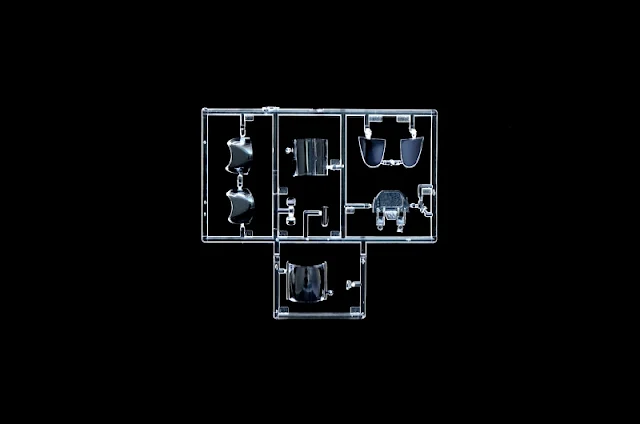.jpg)
.jpg)
.jpg)
.jpg)
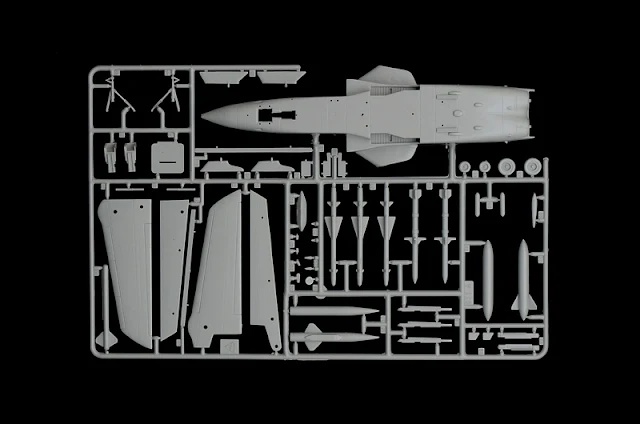.jpg)
.jpg)
.jpg)
.jpg)
.jpg)

.jpg)
.jpg)
.jpg)
.jpg)
.jpg)
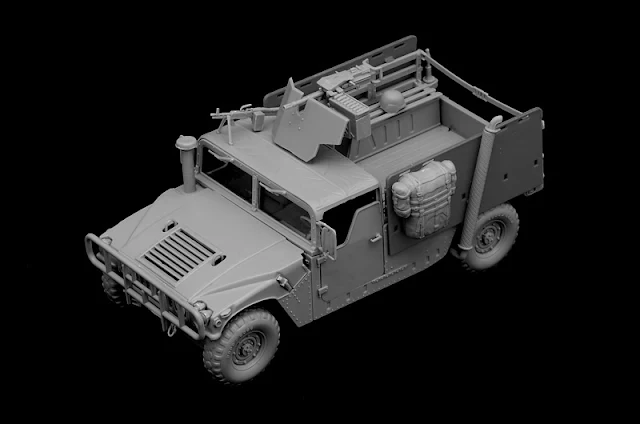.jpg)
.jpg)
.jpg)
.jpg)
.jpg)
.jpg)
.jpg)
.jpg)
.jpg)
.jpg)
.jpg)
.jpg)
.jpg)
.jpg)
.jpg)
.jpg)
.jpg)
.jpg)
.jpg)
.jpg)

.jpg)
.jpg)

.jpg)
.jpg)
.jpg)
.jpg)
.jpg)
.jpg)

.jpg)
.jpg)
.jpg)
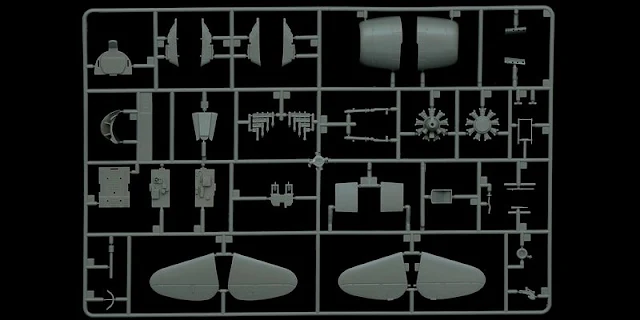.jpg)
.jpg)
.jpg)
.jpg)
.jpg)
.jpg)
.jpg)
.jpg)
.jpg)
.jpg)
.jpg)
.jpg)
.jpg)
.jpg)
.jpg)

.jpg)
.jpg)
.jpg)
.jpg)
.jpg)
.jpg)

.jpg)
.jpg)
.jpg)
.jpg)
.jpg)
.jpg)
.jpg)
.jpg)
.jpg)
.jpg)
.jpg)
.jpg)
.jpg)
.jpg)
.jpg)
.jpg)
.jpg)
.jpg)

.jpg)
.jpg)
.jpg)


.jpg)
.jpg)
.jpg)
.jpg)

.jpg)
.jpg)
.jpg)





.jpg)

.jpg)
.jpg)
.jpg)
.jpg)
.jpg)
.jpg)
.jpg)

.jpg)
.jpg)

.jpg)
.jpg)

.jpg)




.jpg)
.jpg)
.jpg)
.jpg)
.jpg)
.jpg)
.jpg)


.jpg)
.jpg)
.jpg)
.jpg)
.jpg)

.jpg)
.jpg)
.jpg)
.jpg)
.jpg)
.jpg)





.jpg)
.jpg)







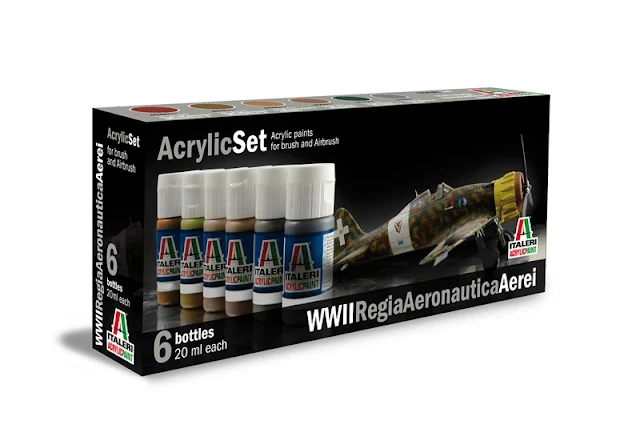







.jpg)

.jpg)
.jpg)
.jpg)


.jpg)
.jpg)
.jpg)
.jpg)
.jpg)
.jpg)
.jpg)
.jpg)
.jpg)
.jpg)
.jpg)



.jpg)
.jpg)

.jpg)
.jpg)
.jpg)

.jpg)
.jpg)




.jpg)

.jpg)
.jpg)
.jpg)
.jpg)
.jpg)
.jpg)

.jpg)

.jpg)
.jpg)

.jpg)
.jpg)

.jpg)
.jpg)
.jpg)
.jpg)
.jpg)
.jpg)
.jpg)
.jpg)
.jpg)


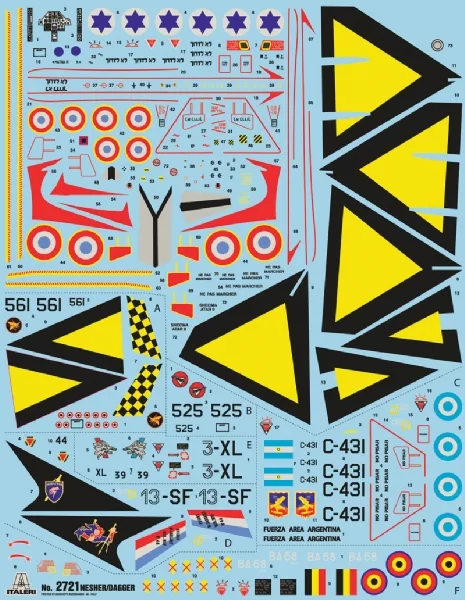


.jpg)
.jpg)
.jpg)

.jpg)

.jpg)
.jpg)
.jpg)

.jpg)
.jpg)
.jpg)
.jpg)
.jpg)

.jpg)
.jpg)
.jpg)
.jpg)

.jpg)
.jpg)

.jpg)

.jpg)
.jpg)
.jpg)
.jpg)
.jpg)
















































